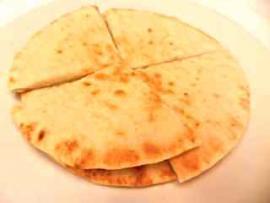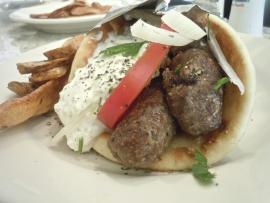What do beer and bread have in common?—Fermentation by yeast. At least 30,000 years ago “bread” was discovered. Wheat and barley were among the first crops to be domesticated in the Fertile Crescent. Its cultivation was crucial in the transition from paleolithic man (hunter and gatherer) to become neolithic man(farmer).
About 10,000BC, the leavening of bread in Ancient Egypt, who also practiced beer and mead fermentation, was standard. But it was the Greeks who took bread making to the modern era with the development of the self standing, pre-heatable oven with a door. Athenians in Antiquity who enjoyed over 70 different types of breads and cakes, but who were able to grow only barley and emmer, had to import wheat for the making of white bread from Scilly, Egypt and Asia Minor.
Flatbread, one of the earliest forms of lightly leavened bread, was most likely the outcome of porridge dropped on a hot stone. Indeed flat bread is made similarly today and eaten nearly the world round—from naan and roti in India, to tortillas in Mexico. The word “pita” for “bread, cake, pie” was used by Byzantine Greeks in 1108 and throughout the Hellenized Near East and African territories. Whether derived from ancient Greek for “flat” bread and “pastry”, or an Aramaic root, the word “pita” was transformed to “pizza” by a northern Italian dialect and is known in that form universally. In modern Greece, pita is the flat bread (usually without a pocket) that wraps skewers of meat (pita souvlaki), the condiment and salad dipper, the savory and sweet fillo pastries—spanakopita (spinach pie), tyropita (cheese pie), maranthopita (fennel pie)—as well ubiquitous suffix for baked cake like pastries, karidopita (walnut pie) and portokalopita (orange pie).
At the Gardens we brush pita with oil and heat it on the flat grill. Whether wrapped around slices of tender gyro or wedged for dipping fava, pita is one of the most favored foods at the Gardens.

